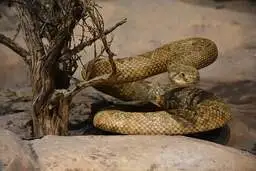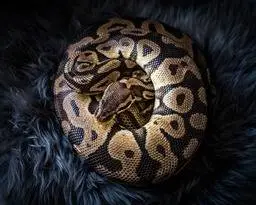India is home to a diverse array of snake species, many of which are unique to the subcontinent. Here are some notable snake species found in India, along with their photos and brief descriptions:
1. Indian Cobra (Naja naja)

The Indian cobra, also known as the spectacled cobra, is one of the most famous snakes in India. Recognizable by its hood and distinctive spectacle-like marking, it is revered and feared in equal measure.
2. King Cobra (Ophiophagus hannah)

The King Cobra is the world’s longest venomous snake, capable of growing up to 18 feet. Despite its intimidating size, it is generally shy and avoids human encounters.
3. Russell’s Viper (Daboia russelii)

Russell’s Viper is one of the deadliest snakes in India, responsible for many snakebite incidents. It is characterized by its stout body and distinctive chain-like pattern along its back.
4. Indian Python (Python molurus)

The Indian Python is a large, non-venomous snake found in various parts of India. It can grow over 10 feet long and is known for its powerful constriction abilities.
5. Common Krait (Bungarus caeruleus)
The Common Krait is another highly venomous snake found in India. It has a distinctive banded pattern and is known for its potent neurotoxic venom.
6. Saw-scaled Viper (Echis carinatus)
The Saw-scaled Viper is a small but aggressive snake. It gets its name from the saw-like scales on its body, which it rubs together to produce a warning sound.
7. Indian Rat Snake (Ptyas mucosa)
The Indian Rat Snake is a common non-venomous snake found throughout India. It is often mistaken for a cobra due to its similar appearance but lacks the venomous capabilities.
8. Banded Sea Krait (Laticauda colubrina)
The Banded Sea Krait is a highly venomous sea snake found in coastal waters of India. It has a distinctive banded pattern and is often found hunting in coral reefs.
These are just a few of the many snake species that can be found in India. Each of these snakes plays a vital role in their respective ecosystems, contributing to the ecological balance.
For more information, you can refer to sources such as the World Wildlife Fund and National Geographic.